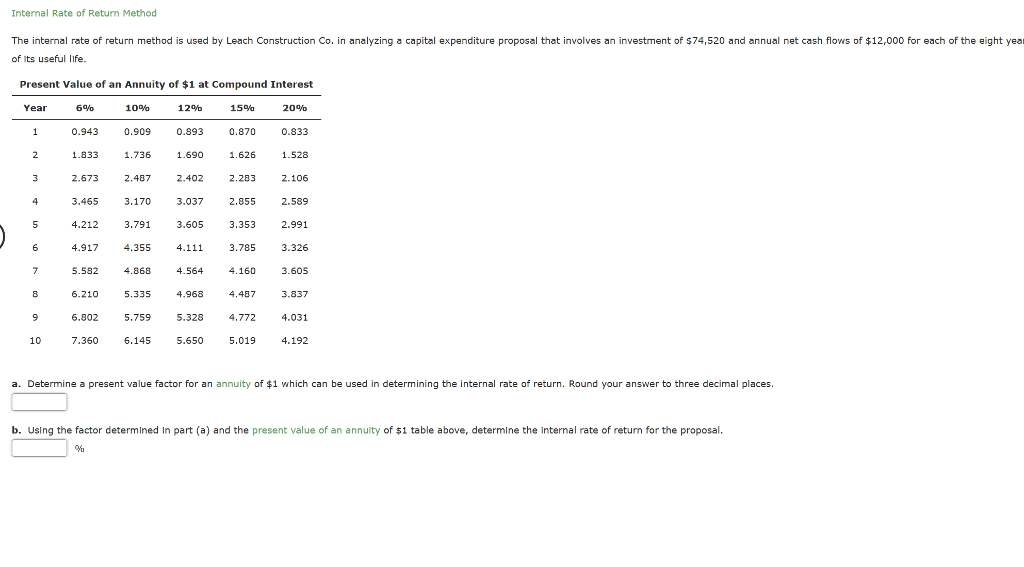
The internal rate of return indicates a project or investment’s efficiency. It is one of the measures that facilitate the comparison of different investment options. Thus, it is an essential tool in capital planning and investment decision-making. This project generates want a $5500 tax deduction here’s how to get it a positive NPV, and the discount rate is lower than the IRR. In other words, the IRR is more than the project’s required rate of return; therefore, it is a profitable investment. Companies can use IRR to evaluate potential projects by measuring their expected return.
Any fixed time can be used in place of the present (e.g., the end of one interval of an annuity); the value obtained is zero if and only if the NPV is zero. For example, when the lottery amounts are announced, did you know that a $100 million pot is not actually $100 million? It is a series of payments that will eventually lead to a payout of $100 million but does not equate to a net present value of $100 million. In other words, to get a future value of $7,764 with monthly payments of $50 per month for 10 years, the IRR that will bring that flow of payments to a net present value of zero is 5%.
This discount rate can then be thought of as the forecast return for the project. If the IRR is greater than a pre-set percentage target, the project is accepted. The formula for IRR is complex, and so accountants usually use Excel. Once the annual yield is listed, the IRR can be calculated by searching it in the functions menu in Excel and selecting the cells with the initial investment and annual yield as the input into the “Values” section.
If the target return was 6%, then the project would be accepted; if the target return was 15%, then the project would be rejected. It is important to note that the value of CF0 is always negative as it is the cash outflow. The entire equation is set up with the knowledge that at the IRR, NPV is equal to zero. Get instant access to video lessons taught by experienced investment bankers.
Note that life insurance has a very high IRR in the early years of the policy—often more than 1,000%. This IRR is very high during the early days of the policy because if you made only one monthly premium payment and then suddenly died, your beneficiaries would still get a lump sum benefit.

The internal rate of return (IRR) cannot be singularly used to make an investment decision, as in most financial metrics. The IRR measures the compounded return on an investment, with the two inputs being the value of the cash inflows / (outflows) and the timing, i.e., the coinciding dates. The internal rate of return is the discount rate that would bring this project to breakeven, or $0 NPV. Finally, by Descartes’ rule of signs, the number of internal rates of return can never be more than the number of changes in sign of cash flow. The answer lies in the fact that the investors do not have to invest the full 100,000 US dollars.
Someone on our team will connect you with a financial professional in our network holding the correct designation and expertise. Our writing and editorial staff are a team of experts holding advanced financial designations and have written for most major financial media publications. Our work has been directly cited by organizations including Entrepreneur, Business Insider, Investopedia, Forbes, CNBC, and many others. This team of experts helps Finance Strategists maintain the highest level of accuracy and professionalism possible.
In order for the IRR to be considered a valid way to evaluate a project, it must be compared to a discount rate. If a discount rate is not known, or cannot be applied to a specific project for whatever reason, the IRR is of limited value. If a project’s NPV is above zero, then it’s considered to be financially worthwhile. For this example, the project’s IRR could—depending on the timing and proportions of cash flow distributions—be equal to 17.15%. Thus, JKL Media, given its projected cash flows, has a project with a 17.15% return.